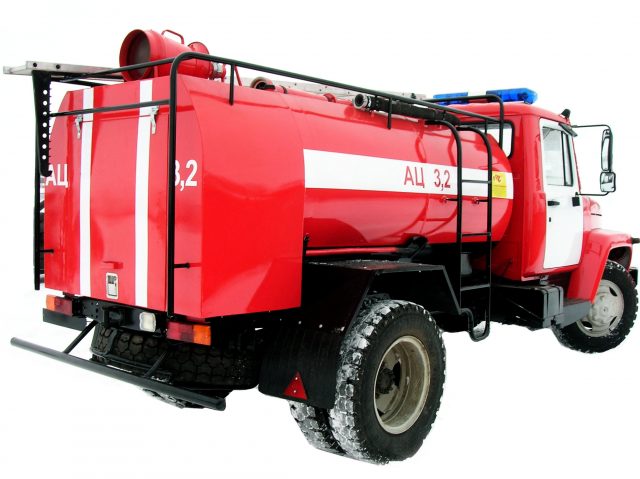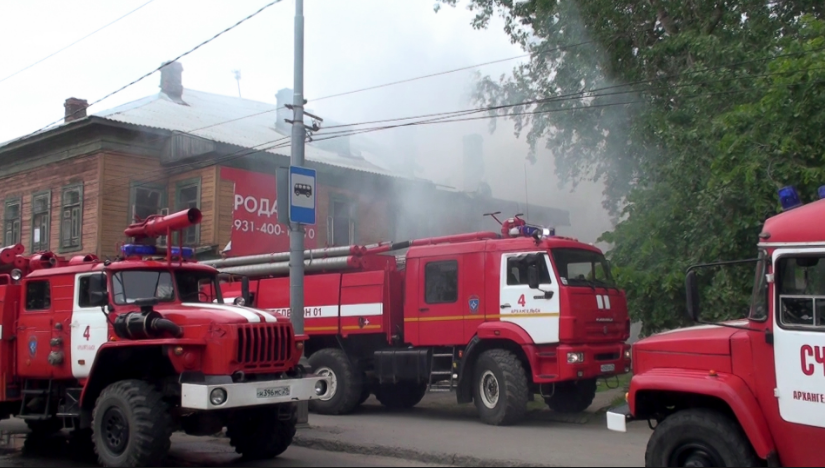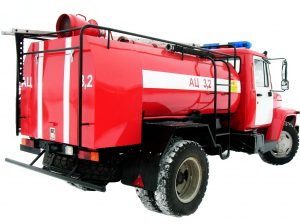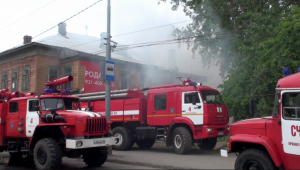Main fire trucks for general and targeted use
The first Russian fire trucks appeared in 1904. Then they could carry up to 10 people and were equipped with simple equipment. Over time, technologies became more complex, and the arsenal of transport was replenished with new devices and means. Today they are divided by purpose and type of equipment. For the delivery of personnel, fire extinguishing means and their supply to the hotbeds of fire, for carrying out emergency rescue operations, the main fire trucks are used.
Variety of cars
The body of the fire truck is painted red and white, and the chassis is painted black. Such fire fighting vehicles should not have stickers, inscriptions, except for those provided by the rules and the manufacturer.
The main fire trucks indicate the type in an abbreviated form, characteristics, the number of the fire department and the name of the settlement.
Retractable and other elements that can be dangerous to humans are indicated by red and white stripes. Depending on the purpose, the main fire trucks are of general and targeted use. In most cases, the basis for the equipment is the chassis of vehicles of various carrying capacities. For example, the production of factories KrAZ, Ural,.
Chassis selection is one of the top priorities in building a fire truck. For lightweight fire superstructures with simple equipment, serial models are sufficient, and for airfield vehicles, four-wheel drive and an increased wheel arrangement are required. In addition, older types of chassis may not meet the requirements of new modifications of fire fighting equipment and superstructures.
General purpose machines
The following types of transport are referred to the main fire engines of general use:
- AC - tank trucks;
- ANR - pump and hose;
- APP - first aid;
- AED - with a high pressure pump.
Let's take a closer look at each of the types of machines.
 are intended not only for the delivery of fire extinguishing agents to a fire, but also for the transportation of combat crews. Extinguishing with a tank truck is carried out with water or foam. The equipment includes a foam concentrate, fire pumps and communications. Water is used for this from a tank or from other sources.
are intended not only for the delivery of fire extinguishing agents to a fire, but also for the transportation of combat crews. Extinguishing with a tank truck is carried out with water or foam. The equipment includes a foam concentrate, fire pumps and communications. Water is used for this from a tank or from other sources.
The equipment in different models of fire superstructures is the same, but the characteristics differ: the volume of the foam concentrate tanks and tanks, the pump power. Depending on the capacity of the water tank, such transport can be light, medium or heavy. There are hybrid modifications with fire escapes or high power pumps. Water tanks are made of carbon steel or fiberglass.

The pump-and-hose fire truck is designed to carry a combat crew and an increased number of fire fighting equipment. Structurally, it differs little from a tanker truck, but does not have water tanks. Due to this, additional space appeared for the crew and equipment.
Pump and hose trucks deliver equipment and fire extinguishing agents, and, if necessary, are capable of pumping a large volume of water from outside sources. The sleeves are laid quickly and over long distances. Such fire trucks are additionally equipped with trunks, including air-foam, fire extinguishing agent generators, as well as manual ladders. Their driving performance allows you to get to hard-to-reach places and make water intake without special entrances to water bodies.
The first-aid vehicle or the old-fashioned rapid response vehicle stands out from the entire main group for its light weight and capabilities. It is based on a light duty chassis. Mainly intended for settlements, especially large ones. In conditions of traffic congestion and modern buildings, the first aid vehicle gets to the place where the fire broke out faster. Thanks to its small size, maneuverability is increased.
These vehicles provide first aid for firefighting and rescue operations. If there is a need, then after them other fire engines start to extinguish the fire. According to statistics, reducing travel time allows people to save lives and more effectively eliminate foci. The disadvantage of a first aid car is limited maneuverability. All models differ in the complete set of fire fighting equipment and the cabin capacity for the combat crew.

A fire truck with a high pressure pump is required to extinguish fires in high-rise buildings. The equipment includes a high-pressure pump, tanks for extinguishing agents and other equipment. The substances are supplied through hose lines under strong pressure. These are heavy-duty vehicles with compartments for equipment and communications, as well as space for transporting combat crews.
Previously, fire-fighting and rescue vehicles were referred to as general-purpose vehicles. He had an extended set of firefighting equipment, and he was used to extinguish fires in various situations and conduct a number of emergency rescue operations.
Targeted machines
The main target fire trucks are used to extinguish various difficult situations. These include airports, factories, infrastructure, cultural facilities and the like. In addition to water and foam solutions, they provide for the presence of powder, gas extinguishing agents.
Targeted machines are:

Aerodrome cars are necessary to eliminate fires in aircraft (airplanes and helicopters), spilled fuel, and evacuate people from aircraft. Sometimes it becomes necessary to soften the landing of the aircraft, and with the help of special equipment they cover the landing strip with a layer of foam. There is a starting and main transport for these purposes. At aerodromes, the response in the event of a fire is expected within 30 minutes.
The vehicles are equipped with suction, pressure and combined action fire hoses, circular saws for opening the fuselage of aircraft, foam tanks, a pump compartment, water tanks and additional fire extinguishing agents.
Their flotation must be high in order to operate effectively outside the runway. There should be 1 or 2 fire trucks at the airfield.
- APT, AP, AGT, AKT
In the petrochemical industry, fire extinguishing is carried out using foam, powder, gas-water and combined extinguishing vehicles. The latter option is used in forestry, in the gas industry, as well as in various types of transport. They are equipped with tanks for extinguishing agents, communications for their transformation and supply to sleeves, fire monitors. In their cabins, personnel are housed, and in additional compartments - technical weapons. Superstructures are installed on the basis of hoisting vehicles.






